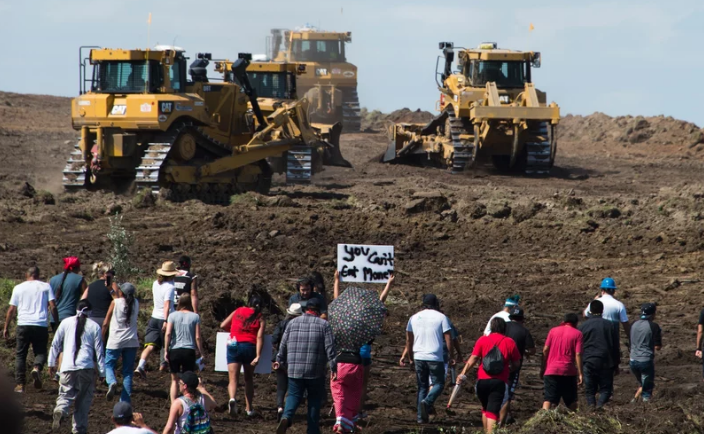Read/Write
Dunbar-Ortiz Intro: This Land (Audiobook (8:32-), I can also share this)
Please read Roxanne Dunbar Ortiz’ “Introduction” from her book, An Indigenous People’s History of the United States (attached below). Then, upload a pdf or word document with your responses to the following questions.
In 2-3 sentences each, please respond to the following:
1. Define Settler Colonialism (p.2)
Settler colonialism is the systemic displacement and extermination of any indigenous people who refuse to assimilate into the hegemonic structures of the white imperial ethnostate and its economic system of unjust class subjugation. Dunbar-Ortiz specifies land theft, white supremacy, and genocide as the primary means of action for the system of settler colonialism.
2. Why does Dunbar-Ortiz disagree with historians’ use of the term “encounter?” (p. 5)
It misrepresents the deliberate system of displacement and extermination as something that happened to the white ethnostate as it merely encountered the vast civilizations which in fact it carefully worked to exterminate and displace. It centers the excuses and discourses the white empire makes, rather than taking any objective perspective, or — god forbid — centering the perspectives of the hundred million people who were exterminated by the white ethnostate during these periods of “encounter,” and the many millions who have continued to be exterminated and displaced by the white ethnostate in the centuries since.
Read/Write
- Choose a topic from the following list of Indigenous activist issues that interests you the most. If you are not familiar with any of the topics, do a few quick google searches to help you decide
- Sogorea te land trust (Oakland, California)
- Thirty Meter Telescope on Mauna Kea (Hawaii)
- Wet’suwet’en Territory (Canada)
- Arizona Sacred Sites and Border Wall (Arizona)
- Dakota Access Pipeline (North Dakota)
- Find and watch or listen to a short video or podcast about the issue
- Create and submit a document or creative art work that includes the following information:
- A short summary of the Indigenous land activist issue of your choice: who/what native people were involved? When did the activism begin? What land or natural resources are they trying to protect?
- DAPL
- The Oceti Sakowin people, the people of the Council of the Seven Fires were involved. As were countless allies and neighbors who stood in solidarity with the Oceti Sakowin to prevent the destruction of hundreds of sacred sites in clear violation of the Treaty of Fort Laramie, and the construction of a pipeline to carry toxic chemicals across the rubble of illegally destroyed sacred sights and through the main water source for the tribe.
- Activism began in earnest on August 4, 2016 when the tribe sued the white empire’s USACE which had falsely claimed that “no historic properties will be affected by the pipeline crossing” despite their own internal research showing that this claim was an outright lie. Protesting began ramping up immediately, with activists disrupting construction activities and protecting the tribe’s sites and natural resources.
- The main things they were trying to protect were the hundreds of cultural sites that the white empire had planned to destroy, as well as the river which provides water and life to the tribe.
- A personal reflection– what do you think should be done about the issue you chose?
- The tribe clearly has all the legal rights it is arguing for, and a moral right beyond those legal rights. I think the best solution is not just one that stops the harms being done by the white empire and ameliorates the impacts that have already happened, but also puts in place structures to prevent these kinds of things from happening in the future. In the same way that the white empire’s failure to crucify bad cops has led to a loss of public trust in policing and a visible loss of any moral legitimacy of policing (not that there ever were any good cops), the fact that the USACE knowingly lied and conspired to destroy hundreds of cultural sites in exchange for money should mean extremely harsh punishments for all those who are responsible, in addition to those new measures which prevent anything like this from ever happening again.
- an image that depicts a certain aspect of the activism (people, protests, the land or water being protected, etc).
- the link to the short film or video that you watched to familiarize yourself with the issue
- Our History is the Future is a really good book about this topic by an indigenous activist which I recently read.
- I also read the Smithsonian’s page about DAPL to refresh my memory, and read/ listened to NPR’s piece about the timeline of events.
